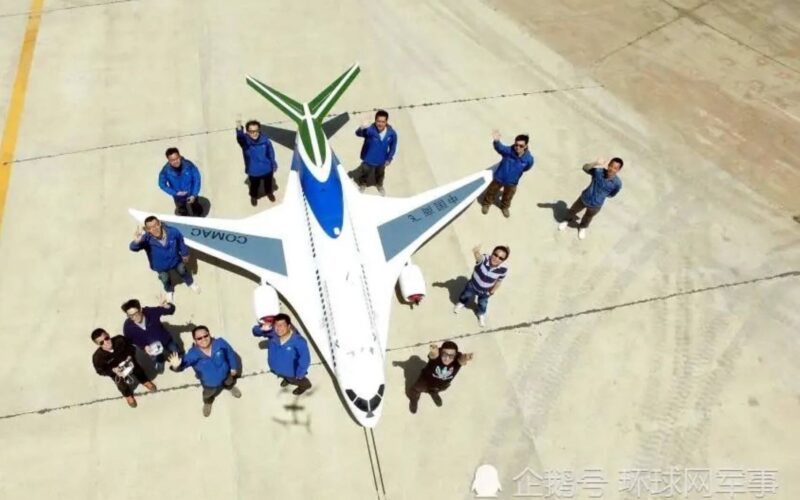Large technology companies sometimes tend to have small, semi-independent divisions dedicated to advanced research. Separated from the rest of the firm, they can avoid bureaucracy, provide secrecy and acquire funding in ways that would otherwise be impossible. As a result, such divisions often have their unique, unconventional “style” complete with an aura of mystery and daringness.
Lockheed Martin Skunk Works and Boeing Phantom Works are two of the most prominent examples of such “companies within companies”. In 2013, Chinese aircraft manufacturer COMAC decided to initiate a “…works” of its own.
While its inspiration was worn on the sleeve – most Chinese officials, while talking about the project, constantly hinted at Western counterparts – the uniqueness of this undertaking was underscored in subtle, yet numerous ways.
It was named “Dream studio”, a name that was as non-threatening as it was non-descript.
It was focused solely on civilian projects, very unlike both Skunk Works and Phantom Works that engage primarily, if not exclusively, with military technologies. China’s military is notorious for its secrecy in regards to advanced development, and COMAC is a manufacturer of purely civilian aircraft, so such a difference does not strike as unexpected. In this regard, Dream Studio functions as any advanced Research and Development team of any Western manufacturer, but with some additional bling.
Dream Studio also heavily emphasizes openness and transparency, putting themselves in opposition to the “spooky mystery” of counterparts from Lockheed Martin and Boeing. Their experiments are heavily publicized in Chinese media, with a dose of zealous patriotism, masked behind the veil of youthful enthusiasm. They constantly emphasize “every man” aspect of their workforce instead of the “best of the best” pitch one would expect from an elite team of engineers.
Their roots are also quite unique. From what can be gathered, the division formed more as a club of modelling enthusiasts than an actual arm of the company, with its founder Zhang Chi making a call for talents in the company’s intranet in early 2013: “Are you a hardcore aviation enthusiast? Do you want to build your own airplane? Come join us!”
It was supported by Communist Youth League, a youth-oriented division of the Communist party, and as such, received a small amount of money for the development of independently-run projects. As Zhang said to the Chinese Youth magazine, initially the team of 8 people worked in their spare time and weekends, devouring energy drinks and coffee, and spending days without seeing their families.
The first project, for which 300,000 yuan ($46,500) were dedicated, was an advanced blended-wing-body (BWB) technology demonstrator for a regional airliner, called Ling Bird. The money was strictly for purchasing materials and tools, the budget was overrun, and according to the same interview, the team finished the demonstrator on enthusiasm alone.

The first ling Bird. (Image: COMAC / Chinese Youth)
It flew at the end of 2013. In early 2014, the team was expanded, the funding was increased, and two more demonstrators – Ling Bird B and Ling Bird C – were in the works.
By 2015, the team already consisted of 17 people and was assigned 5 million yuan ($774,000) per project. They still worked on small-scale demonstrators for unusual aircraft designs, but the premise seemingly shifted from a collection of enthusiasts working overtime to a full-fledged division of the company. At least the public image was formed that way.
The last publicized project, Ling Bird H, was a step above all previous ones in both scale and relevancy. It consisted of a configurable sub-scale technology demonstrator running on hydrogen-powered engines as an experiment on the use of sustainable fuels, a concept that was on the agenda of Western manufacturers for decades.
With more and more manufacturers jumping on board of praising Hydrogen as the fuel that will power the future of aviation, this Dream Studio’s experiment might very well have a very tangible and applicable result in the future, in contrast with previous BWB designs that (for a multitude of reasons) will likely remain on the drawing board.
If successful, and if applied, it might propel the Dream Studio as well. There has been no news on their new projects since 2019, and the reason for that may have been a more serious attitude that the company has taken in regards to their advanced research arm: with less emphasis on public image and more secrecy, a status quo for innovation departments in China.

Ling Bird H (Image: Sohu.com / COMAC)

